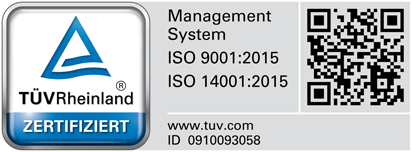sales@lufapak.de +49 2631/384-0 Contactform
The LIFO procedure, also known as Last In First Out, is a useful tool for organizing and processing data within a system. It works by feeding data into the system in an orderly fashion so that entries can be tracked more easily. This process helps identify the most recent data more quickly and efficiently, which is often necessary when trying to collect or analyze a large number of entries. Implementing this process within a particular database infrastructure greatly simplifies the tracking of entries without sacrificing accuracy or detail. Thus, the LIFO process is an invaluable asset in managing large data storage networks.
LIFO Definition – Last In First Out
Last In, First Out (LIFO) is a well-known inventory concept used in organizations around the world. It is used to manage the costs associated with inventory and to determine the exact cost of goods sold. The basic principle of the LIFO method is that the most recently purchased inventory or assets are the first to be used, sold or consumed. The LIFO method is commonly known as the “consume first” rule and helps businesses reduce their reported income during times of inflation.
In times of inflation, businesses can save taxes by reporting profits from old products that have lower selling prices than current items. Nevertheless, there are some considerations when choosing this method as opposed to its counterpart FIFO (First In First Out). Therefore, it is advisable to consult a professional financial advisor or accountant before making any major accounting decision.
The periodic LIFO method
The periodic LIFO method is a cost flow assumption used to account for the cost of goods sold in long-term inventory systems. Although it may sound complicated, this method simplifies the accounting process by recognizing costs that are constant at any point in time and change over time.
By tracking when the unit was purchased and when a sale occurred, the periodic LIFO method can be used to determine how much money was spent on the current inventory and what that cost should be in the future. This makes profit tracking easier and more accurate in business models with fluctuating prices, leading to better-informed decisions.

The permanent LIFO method
The permanent LIFO process is a valuable tool for companies to manage their inventory. It works by assigning the oldest items in an inventory to the most recent orders, while assigning newer items to older sales orders. This helps companies maintain a continuous movement of inventory, resulting in lower losses due to damage or expiration.
Also, because there is no remaining inventory, companies do not have to take markdowns or clearances that could reduce their revenue. Ultimately, this process can make it easier for companies to manage their cash flow and optimize their profits.
LIFO Example of Last In First Out Method
To better understand the Last In First Out method, we have an example for you.
Let’s say you have a stack of books with three titles: “Book A”, “Book B” and “Book C”.
When book A is added to the stack, it is placed on top – that is, it is out “first” when one of the books is taken away.
Then, when Book B is added to the stack, it is placed below Book A – so it is second in line in case something needs to be taken out.
Finally, book C is placed third below books A and B in case something needs to be taken away.
Now suppose someone wants to take a book out of the stack. According to the LIFO method, book C would be the first to be taken away since it was on top last – so it would be the first to be taken out, assuming that whatever went in last would come out first.
After book C is removed from the stack, book B would be the first to be taken out if more is taken away, since it is in the row below book C.
Areas of application of the LIFO method
The Last In First Out method can be applied in many different areas, such as inventories, cost of goods sold, and labor costs.
In particular, companies often use the LIFO method when they need to keep track of their inventories so they know exactly what quantities they have on hand at any given time and whether or not new orders need to be placed.
The LIFO process is also commonly used when calculating income taxes, as it allows companies to minimize their tax liabilities by reducing their profits for reporting purposes.
In addition, the Last In First Out method has also proven successful in the financial sector; financial institutions often use this approach for asset management and investment accounting. In addition to these general applications, the LIFO method is also used in areas such as salary incentive plans and even sports statistics. Ultimately, LIFO offers several advantages over other methods of data collection and therefore remains a cornerstone approach in many industries.
Possible storage systems for the LIFO process
In order to effectively use the Last In-First Out method, companies must have an efficient storage system in place. Depending on the company’s purpose and needs, there are several options.
Stacking racks facilitate the storage of large boxes, bins and other bulky items needed for a production line or warehouse.
Pallet flow racks facilitate access to the most recently added items, using rollers to move inventory forward and backward according to LIFO requirements.
Carton flow racks can store large and small items side by side, helping companies save time and space while using the LIFO system efficiently.
For smaller businesses that don’t need a lot of space, cantilever racking systems provide visibility and accessibility to every item at a glance while meeting all LIFO requirements.
No matter the size or type of your business, there is sure to be a storage system that will meet your LIFO compliance needs.
Contact us now and get advice


